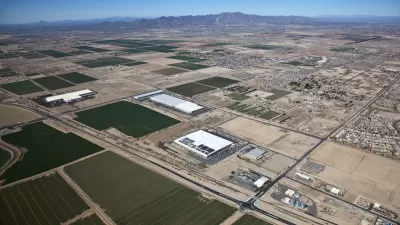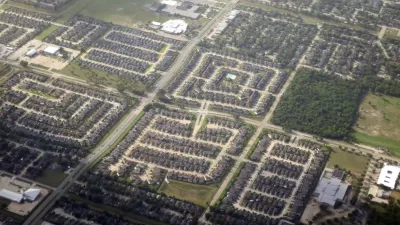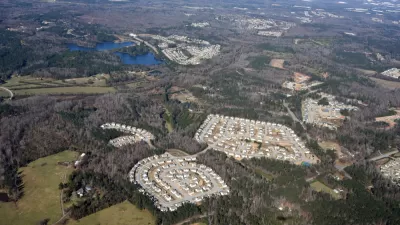Cookie cutter subdivisions typically associated with American suburbs are popping up in the outskirts of cities in countries as far away as Argentina, China and Pakistan.
"For good or bad, the USA's suburbs have become a living laboratory for the world. Developing countries contending with explosive population growth and economic expansion are looking here for hints about how to manage growing cities. For many, modern suburbia - a largely American concept and lifestyle for more than 50 years - is a nirvana worth emulating. Others want to avoid it.
"They both admire and fear it," says Robert Lang, director of the Metropolitan Institute at Virginia Tech. "There are two lessons they take out of the U.S.: unfettered development or sprawl and an appreciation for well-done, master-planned communities."
Copied for years on a smaller scale and adapted to deal with more stringent environmental standards and limited land in Western Europe, American suburbs now have gone truly global:
•Affluent gated communities are sprouting up next to shantytowns outside Buenos Aires.
•On the outskirts of Lahore, Pakistan, new single-family homes are a testament to that country's rising middle class.
•Across China, entire suburban cities are being built at a dizzying speed to keep up with population growth. Outside Beijing and Shanghai, tract-home developments designed to mimic Spanish or Italian architecture have all-American names: Yosemite and Napa Valley.
Asia, Latin America and Eastern Europe have unleashed such a development boom that they have turned to the USA for lessons on how to do it - and how not to."
FULL STORY: Modern suburbia not just in America anymore

Americans May Be Stuck — But Why?
Americans are moving a lot less than they once did, and that is a problem. While Yoni Applebaum, in his highly-publicized article Stuck, gets the reasons badly wrong, it's still important to ask: why are we moving so much less than before?

Using Old Oil and Gas Wells for Green Energy Storage
Penn State researchers have found that repurposing abandoned oil and gas wells for geothermal-assisted compressed-air energy storage can boost efficiency, reduce environmental risks, and support clean energy and job transitions.

Placekeeping: Setting a New Precedent for City Planners
How a preservation-based approach to redevelopment and urban design can prevent displacement and honor legacy communities.

San Francisco’s Muni Ridership Grew in 2024
The system saw its highest ridership since before the Covid-19 pandemic, but faces a severe budget shortage in the coming year.

Colorado Lawmakers Move to Protect BRT Funding
In the face of potential federal funding cuts, CDOT leaders reasserted their commitment to planned bus rapid transit projects.

Safe Streets Funding in Jeopardy
The Trump administration is specifically targeting bike infrastructure and other road safety projects in its funding cuts.
Urban Design for Planners 1: Software Tools
This six-course series explores essential urban design concepts using open source software and equips planners with the tools they need to participate fully in the urban design process.
Planning for Universal Design
Learn the tools for implementing Universal Design in planning regulations.
Heyer Gruel & Associates PA
City of Moreno Valley
Institute for Housing and Urban Development Studies (IHS)
City of Grandview
Harvard GSD Executive Education
Salt Lake City
NYU Wagner Graduate School of Public Service
City of Cambridge, Maryland





























